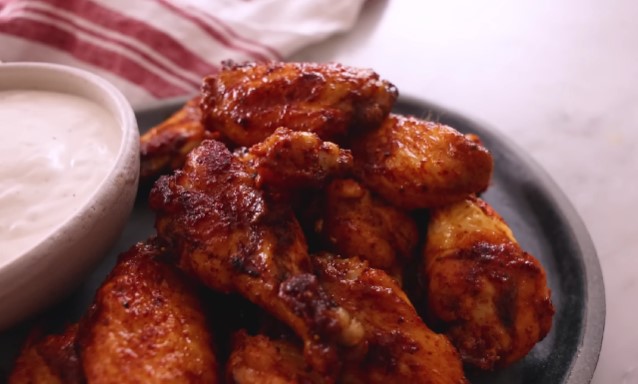Chicken Wing Nutrition Facts
Delving into the world of Chicken Wing nutrition facts unveils a fascinating blend of culinary delight and health considerations. This article provides a comprehensive exploration, encouraging a deeper understanding of what makes these popular treats both tantalizing and nutritious.
Chicken wings are a beloved food across many cultures, known for their versatility and flavor. Whether you’re enjoying them baked, fried, or grilled, it’s important to understand their nutritional content, especially if you’re mindful of your dietary intake. This article delves into the detailed nutrition facts of chicken wings, providing insights that can help you make informed choices about including them in your diet.

Introduction
Chicken wings have become a staple at parties, sports events, and casual dining experiences. They come in various flavors and cooking styles, from spicy buffalo wings to sweet and tangy barbecue. Despite their popularity, many people are unaware of their nutritional value. This article will provide a comprehensive breakdown of the calories, macronutrients, vitamins, and minerals found in chicken wings, along with some tips for healthier preparation methods. Whether you’re a fitness enthusiast, someone managing your weight, or simply curious, this guide will offer valuable insights into the nutritional profile of chicken wings.
Nutritional Breakdown of Chicken Wings
Basic Nutritional Information
For one chicken wing (approximately 34 grams, without the bone):
- Calories: 86
- Total Fat: 6g (7% Daily Value)
- Saturated Fat: 2g (8% DV)
- Trans Fat: 0g
- Cholesterol: 48mg (16% DV)
- Sodium: 33mg (1% DV)
- Total Carbohydrates: 0g
- Dietary Fiber: 0g
- Sugars: 0g
- Protein: 8g
(Source: Nutritionix, Eat This Much)
Vitamins and Minerals
Chicken wings also contain various vitamins and minerals:
- Vitamin A: 4μg (0.5% DV)
- Vitamin B6: 0.2mg (15% DV)
- Vitamin B12: 0.1μg (5% DV)
- Vitamin D: 0.1μg (0.5% DV)
- Calcium: 6mg (1% DV)
- Iron: 0.3mg (4% DV)
- Potassium: 72mg (2% DV)
(Source: Eat This Much)
Comparative Nutritional Analysis
Different preparation methods can significantly alter the nutritional content of chicken wings. For example, fried wings typically have higher fat content compared to baked wings. Here’s a comparison of raw and cooked chicken wings:
Raw Chicken Wings (with skin)
- Calories: 109 per wing (3.2 oz with bone)
- Total Fat: 7.8g
- Protein: 9g
Cooked Chicken Wings (fried, with skin)
- Calories: Approximately 210 per wing
- Total Fat: 14g
- Protein: 13g
(Source: CalorieKing)
Healthier Preparation Tips
To enjoy chicken wings in a healthier manner:
- Bake Instead of Fry: Baking reduces the amount of added fat.
- Remove the Skin: The skin contains most of the fat. Removing it can lower calorie and fat intake.
- Use Lean Seasonings: Opt for herbs, spices, and lemon juice instead of high-calorie sauces.

Frequently Asked Questions
What are the health benefits of chicken wings?
Chicken wings are a good source of protein, which is essential for muscle repair and growth. They also provide several vitamins and minerals that support overall health.
Are chicken wings keto-friendly?
Yes, chicken wings can be keto-friendly, especially if they are not breaded and fried. They contain minimal carbohydrates and are high in fat and protein, fitting well into a ketogenic diet.
How can I reduce the fat content in chicken wings?
To reduce fat content, you can bake the wings instead of frying them and remove the skin before cooking. Additionally, using a marinade without added sugars can help maintain a healthier profile.
Chicken wings, while delicious, should be consumed in moderation, especially if you are mindful of your calorie and fat intake. By understanding their nutritional content and choosing healthier preparation methods, you can enjoy them as part of a balanced diet.

Read also:





